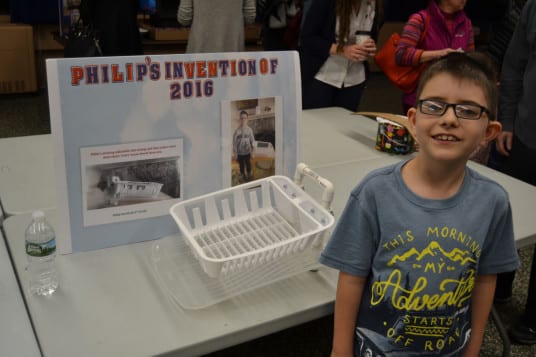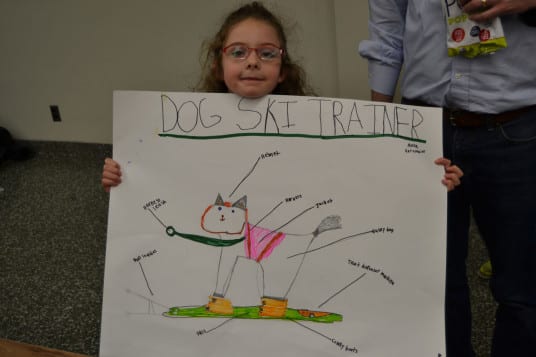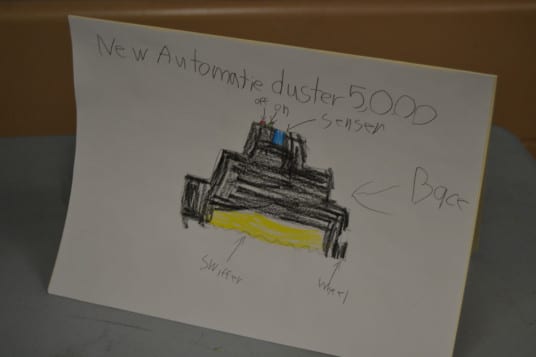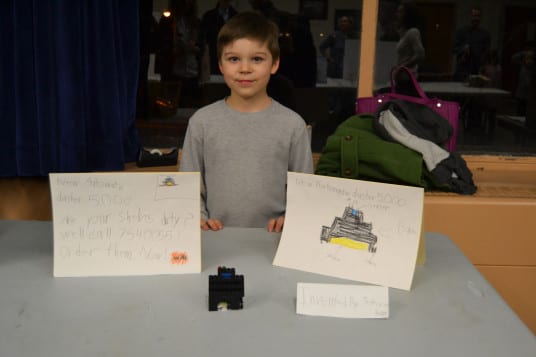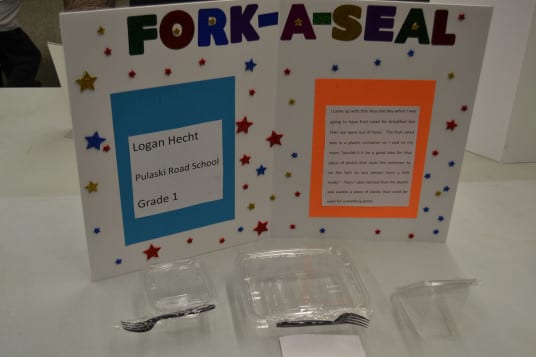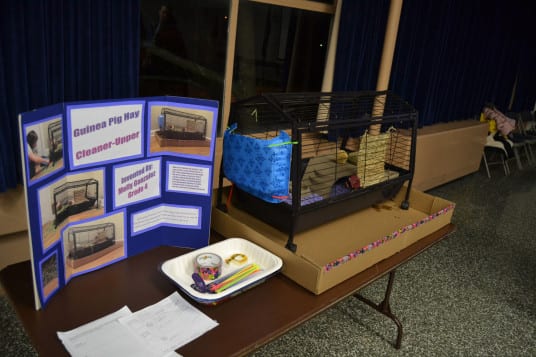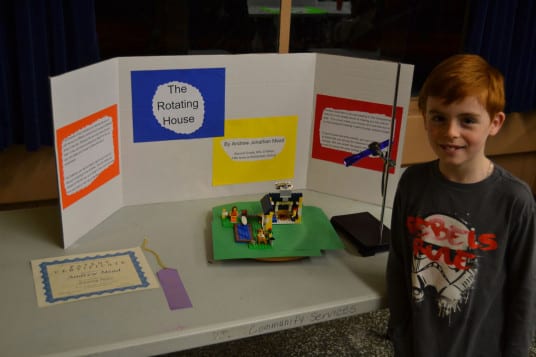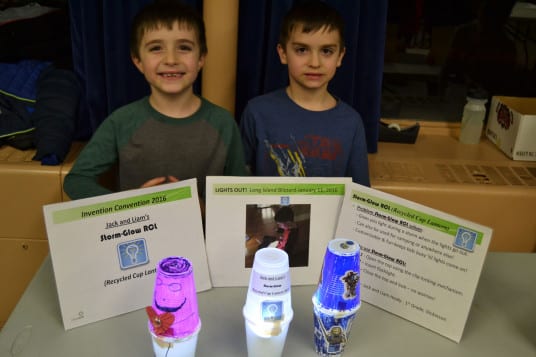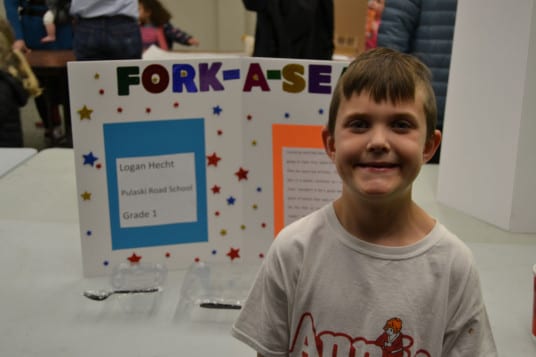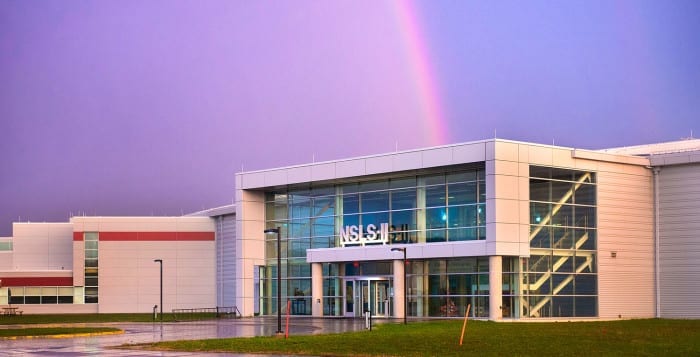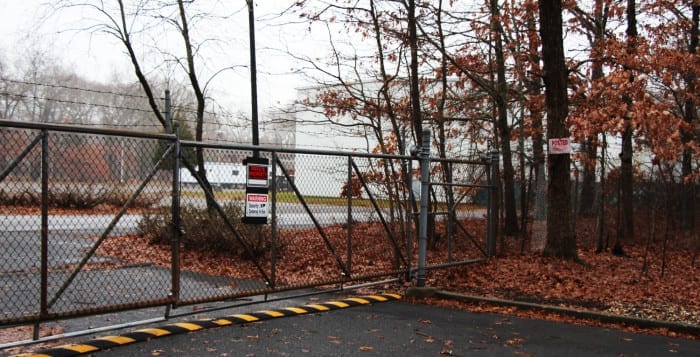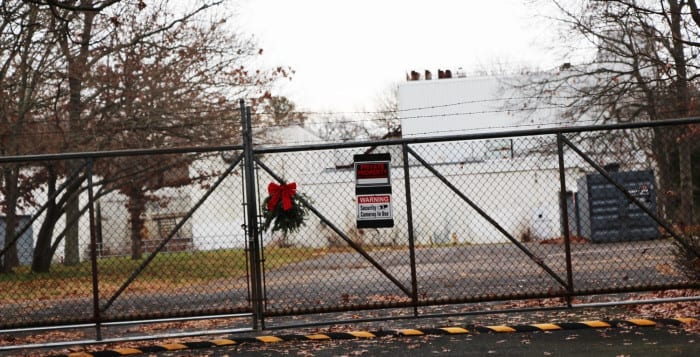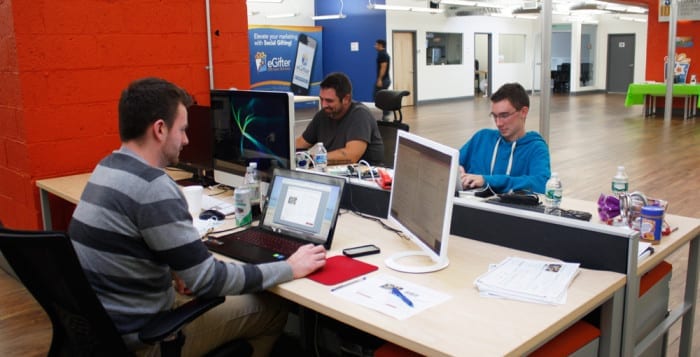For young Northport students, creativity was in the air recently at the Invention Convention.
Gifted and Talented Parents Association, a parent group in the district, hosted the 16th annual Invention Convention at the William J. Brosnan administration building on Feb. 25, where students displayed their innovative projects.
The convention was open to kindergarten through sixth grade students in the district. About 25 projects were on display for community members, school administrators and school board members in attendance.
“The Invention Convention is focused on inspiring, encouraging and celebrating the creativity and ingenuity of our children,” a press release from the GTPA said. “Their natural curiosity and imagination are a perfect combination to create something new.”
One of the projects on display was “The Rotating House,” created by Fifth Avenue Elementary School second grader Andrew Mead, which turns a house at its foundation to allow sunlight into whichever room a homeowner desires at a given time.
“I think it would be very useful for everyone,” Mead said about his invention. “Some people may just want to take a nap or something but they can’t because the sun is shining right on them, and they might not want to wait so long for the sun to move around by itself.”
Logan Hecht, a first grader from Dickinson Elementary School, invented “Fork-A-Seal” for containers with snacks that come without plastic ware.
“I got this idea because one day I was going to have fruit salad for breakfast, but we were out of forks so I thought that this plastic piece right here could be a fork, so you’d always have a fork ready,” Hecht said. “You waste a piece of plastic that could be used for something good.”
Some other inventions included second grader Mitchell Cartwright’s “Second Life,” which turns used lunch trays into planters; first grader Jeffery Raynor’s “The Automatic Duster 5000,” which automatically cleans shelves; third grader Philip Bechtold’s “Adjustable Dish Drying Rack;” and first grade twins Liam and Jack Healy’s “Storm Glow RCI,” which are colorful lanterns for when the power goes out.

